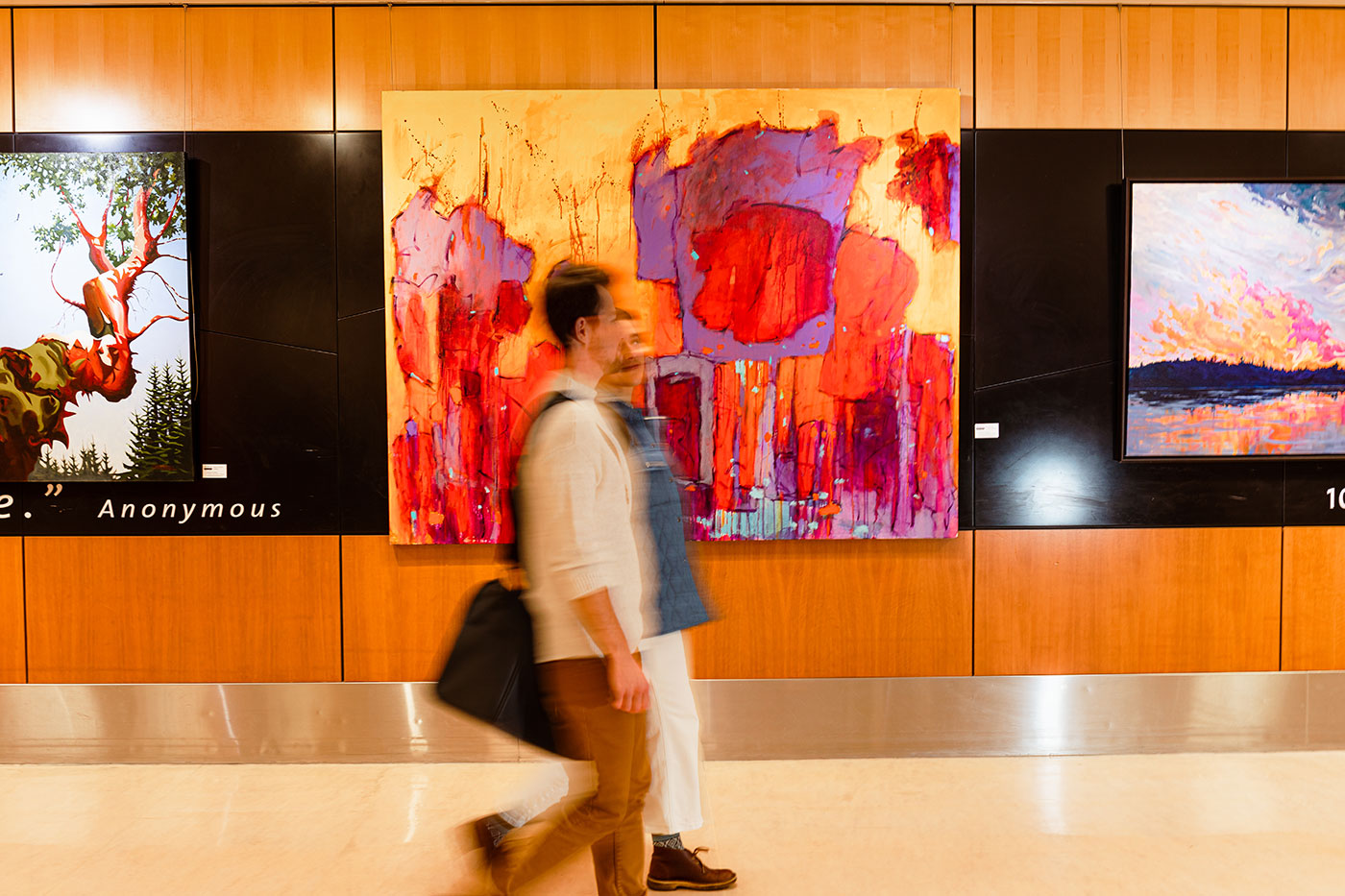
Community
Art at the Airport

Our Purpose
To enhance the public spaces of the Victoria International Airport by the introduction of works of art into the airport environment.
To display artwork that reflects and respects local values and character, providing a source of community pride for Victoria area residents and that can be informative for the travelling public.
To provide professional opportunities to local and regional visual artists.
Commissioned Collection
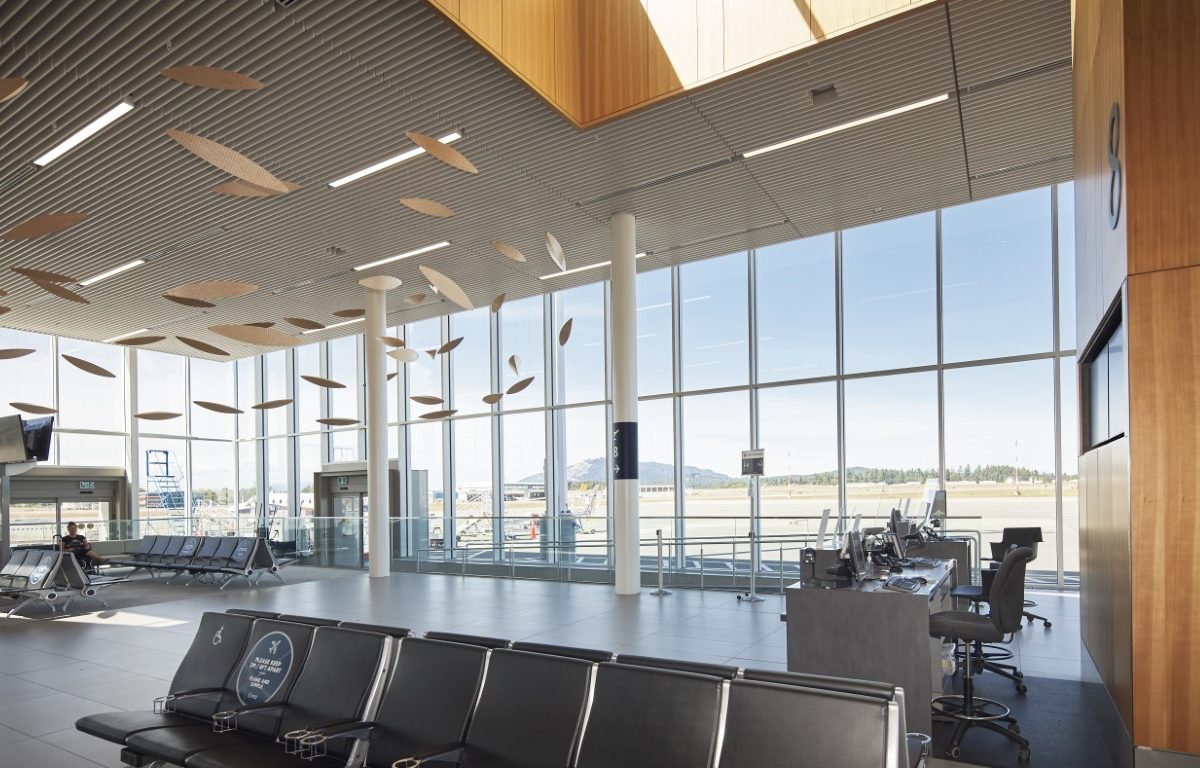
Time Catcher (2019)
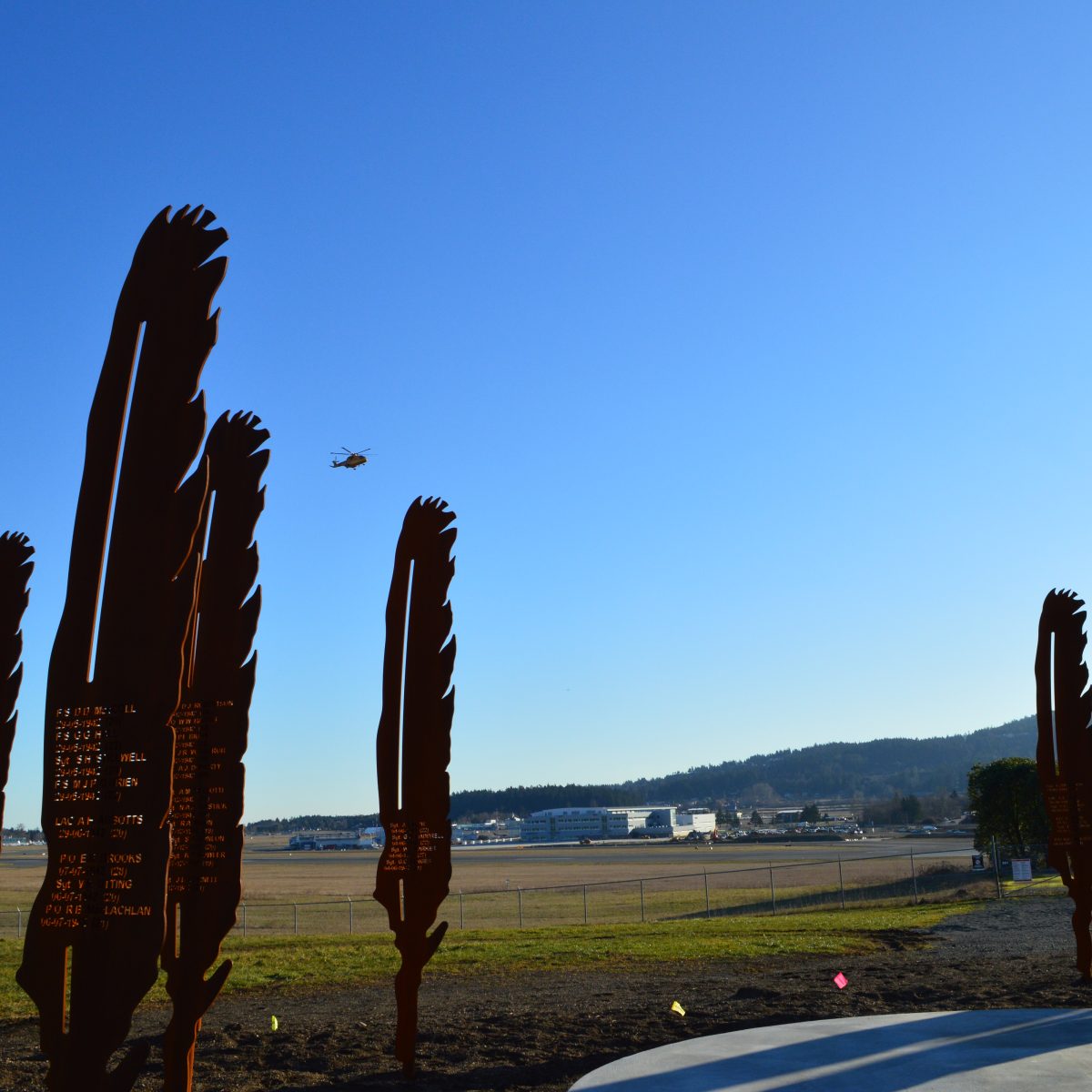
Lost Airmen of the Empire (2017)
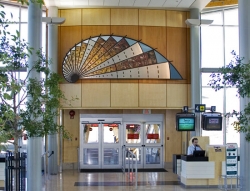
Genesis (2002)
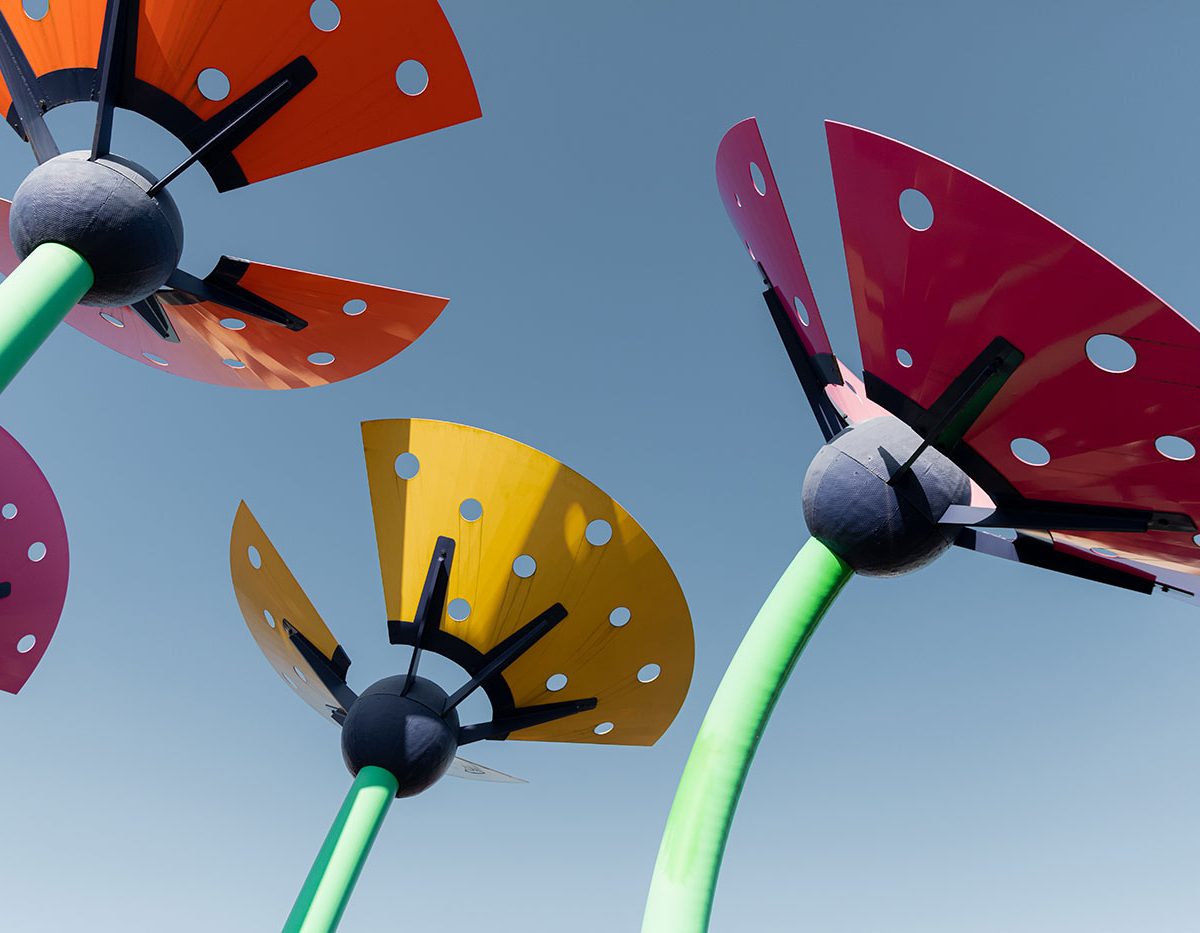
Bouquet of Memories (2006)
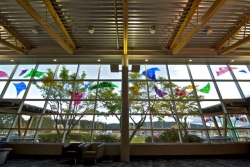
Airplay (2006)
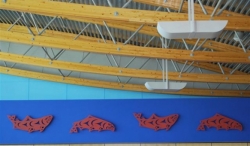
Returning Salmon (2009)
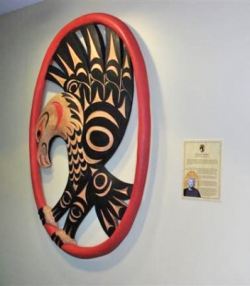
Eagle View (2009)
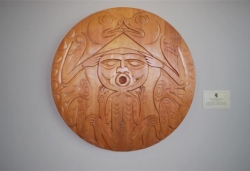
Sul Sul Tan Spindle Whorl #1 – New Beginnings (2009)
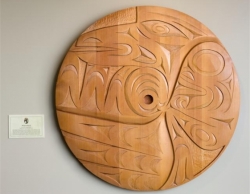
Sul Sul Tan Spindle Whorl #2 – Message (2009)
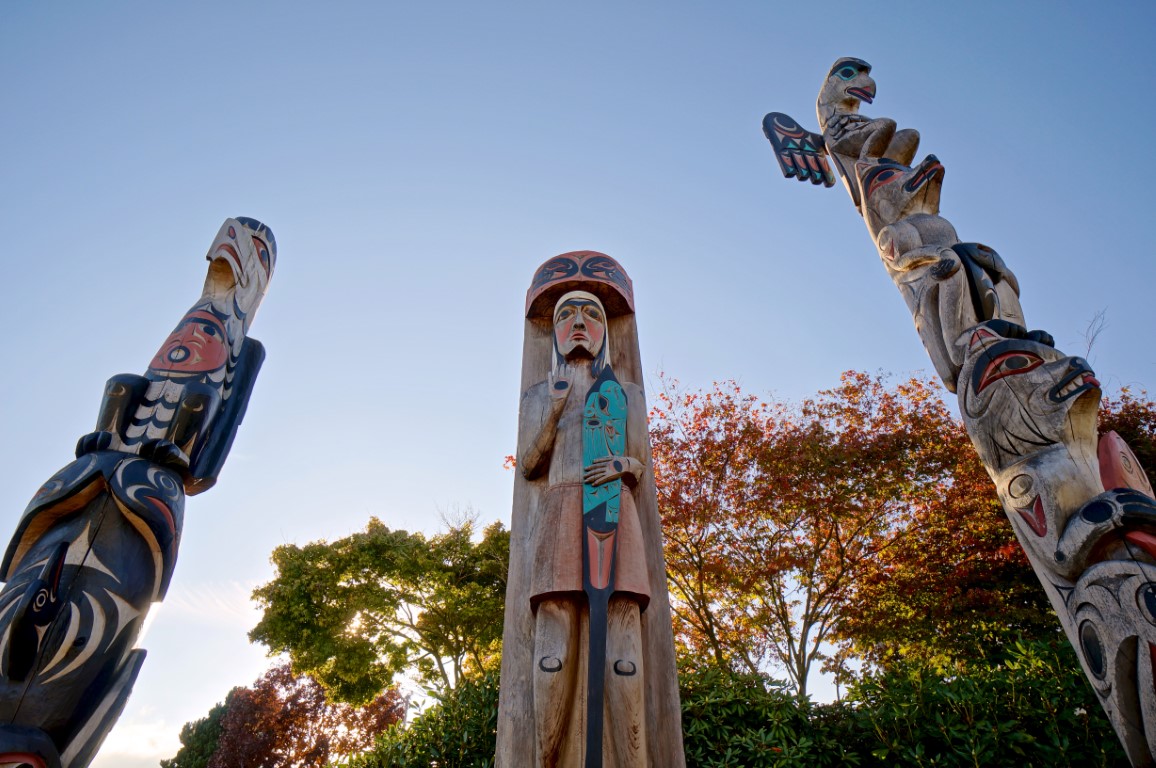
Totems (2011)
Charles Campbell
Location: Lower Passenger Departures Lounge
Time Catcher invokes concepts of time and movement across territories, and sees the passenger departures lounge as an in-between space with the potential for connection and contemplation. The three sided vessels are conceived as metaphorical carriers of ecological and cultural memory with the form derived from the hulls of watercraft, which have a long history of contact and trade on this coast. The complete array forms a set of intersecting circles and alludes to dynamic flows of energy and the interconnectedness of human and natural systems.
“Paradise” by Octavia Butler, is inscribed on the surface of each vessel in Morse code and acknowledges our connection to home and the forces of change that motivate peoples’ movements across the globe.
Paradise
The child in each of us
Knows paradise.
Paradise is home.
Home as it was
Or home as it should have been.
Paradise is one’s own place,
One’s own people,
One’s own world,
Knowing and known,
Perhaps even
Loving and loved.
Yet every child
Is cast from paradise—
Into growth and destruction,
Into solitude and new community,
Into vast, ongoing
Change.
― Octavia E. Butler, Parable of the Talents
Illarion Gallant
Location: Hospital Hill – Mills Road
“The Lost Airmen of the Empire” sculptural monument at Hospital Hill honours the Allied Airmen who gave their lives at the Patricia Bay Air Station during the Second World War. Victoria Sculptor Illarion Gallant completed the sculpture in the Fall of 2017. A community dedication event was held on June 1, 2017.
Hospital Hill, located along Mills Road on the North side of the airport, was home to the Medical Facilities for the Royal Canadian Air Force (RCAF) Station Patricia Bay during the Second World War.
This monument was selected by the Victoria Airport Authority (VAA) and a group of citizens who formed a working group that had the common goal of increasing the awareness of the proud military history of the airport. Approximately 1,000 salvaged bricks from the previously demolished military administration building have been saved and will be incorporated into the project. This monument recognizes and honours those who gave their lives while serving at the airport during the Second World War.
The main feature of this sculptural work is twenty-five 12-foot high Corten Steel Cooper’s Hawk Feathers. The Cooper’s Hawk is a predator known for its extraordinary agility in flight and ferocity in hunting. The names of the lost airmen are water jet cut into the feathers.
The area surrounding the monument is landscaped and a row of red maples stands on either side of the path leading to the memorial. Seating areas feature the saved bricks from the RCAF headquarters. The central seating also serves as a memorial capsule filled with military memorabilia and letters to veterans written by our community.
Linda Stanbridge
Location: Lower Passenger Departure Lounge
Photograph courtesy of Daryl Quenet
The impetus behind the idea for the artwork “Genesis” is the celebration of the harmonic structure found in nature. Linda Stanbridge has chosen the seashell to represent the harmonic proportions reflected in growth patterns evident in the world of plant and human life. The spiral form of the shell is mirrored in the shape of galaxies, the swirling patterns of weather, and even in the structure of the universe itself. The geometry of the shell as well as being universal is also very particular to our geographic location, our island on the West Coast and the area surrounding Victoria.
Linda Stanbridge was born in Glasgow Scotland and presently lives and works in Victoria, British Columbia. She exhibits her work both nationally and internationally and is represented in numerous public and private collections in Canada the U.S. and Europe. Her art practice has grown out of an interest in geometric structures and the dynamics of optics as experienced by the viewer.
Illarion Gallant
Location: Exterior Departures Area
A brightly coloured aluminum and steel scuplture situated across the frontal road from the departures area. The sculpture really is a bouquet of memories as Gallant invited all students and staff of his neighbourhood school to write a paragraph of their favourite memory. The collection of memories is sealed in a capsule inside the seedpod of one of the colourful poppies in the sculpture.
Illarion Gallant’s art projects abroad include works in Austria and Germany. Here his works are many and include the aluminum tree scuplture at the Fort Street Medical Building, the Granite Avacados at the Grand Pacific Hotel, and in Toronto, a tribute to Tom Thomson’s canoe in aluminum complete with 76 – 6′ aluminum reeds.
Thomas Mercer and Edward Schaefer
Location: Interior Departures Check-in Area
A series of hand-blown stained glass panels along the length of the interior glass wall of the departures check-in area.
Thomas Mercer and Edward Schaefer are internationally renowned for their exquisite stained glass artwork. Other works include 36 windows in the BC Government House Ballroom and a gift to the Queen of the Queen’s Golden Jubilee stained glass window in the Legislature which was unveiled during the Queen and Duke of Edinburgh’s visit to Victoria, BC in 2002.
Charles W. Elliott – Coast Salish Master Carver
Location: Domestic Baggage Claim
The Salmon returning from far and distant journeys flashing in the shimmering waters of the flowing rivers, like highways in the sky. The Salmon navigate their way home same as the returning travellers from trips abroad to begin once again the cycle of survival and success.
Charles W. Elliott – Coast Salish Master Carver
Location: New Display Location Coming Soon
The Eagle has a spirit of strength, wisdom and power, as well as being a symbol of good luck, brotherhood and protection.
Charles W. Elliott – Coast Salish Master Carver
Location: New Display Location Coming Soon
Titled ” New Beginnings” because the image has a split frog design on either side of the central person singing. The frogs as guardian spirits herald in new beginnings such the beginning of the New Year. The frogs emerge and sing as the pulses of the earth awake and alert all creatures including mankind to a new beginning, a time to put away our winter traditions and prepare for a new cycle of good gathering and reproduction.
Charles W. Elliott – Coast Salish Master Carver
Location: New Display Location Coming Soon
The messenger being the Raven is a highly intelligent creature respected by all First Nations people. The Raven was first to appear to the Saanich survivors of the Great Flood, brought the message of hope that floodwaters are beginning to recede and life would return to normal. The Raven the Messenger, designated also the Trickster because of his or her abilities to behave playfully tricking other life forms to exercising his control of certain situations. Lastly the third designation being the Transformer, having the powers to appear or disappear as other life forms at certain times.
Charles W. Elliott – Coast Salish Master Carver
Location: Outside of Arrivals
Orca & Thunderbird
This totem depicts one of the most important historical legends in Coast Salish history. The Thunderbird seen on the tail of the orca is a spiritual being and can only be accessed through communication with the creator. It is usually a plea for help.
The orca is the most respected creature of the sea. It is held in very high respect by Coast Salish people because of its physical powers and superior intellect. They survive in packs like wolves and are sometimes designated in the same realm as wolves of the sea.
A coming together of the great spiritual power and awesome physical power can be seen as a balance of power beneficial to mankind as seen through First Nations beliefs.
Salish Welcome Figure
In the past, human figures were carved in much greter than life size. They stood in front of villages with hands and arm held in a welcome gesture.
This welcome figure is based on a traditional Coast Salish welcome figure that would have been seen in front of villages. They faced the water and welcomed arriving visitors. The hands and arms of this figure shows the welcome gesture as well as an arm holding a paddle, showing that the people of the First Nation from Saanich are people of the canoe and paddle. These are symbols of welcome and thanks as well as survival.
Raven, Wolf, and Bear
This totem is a depiction of a bird and animals held in high esteem bu the Saanich people. In the days of the past, when forests, oceans, rivers and streams were in pristine condition, animals, birds, sea creatures, and mankind of the Saanich First Nations held a close relationship to each other. They shared the space provided by our creator “XAIES”; along with a closer understanding and respect between mankind, our brothers and sisters, and other life forms which we believe we are a part of.
On this pole the Raven sits atop the head of the Wolf and below the Wolf is the Bear clutching a salmon. The Raven is Saanich mythology is noted for its intelligence and is regarded as a messenger as it flies its daily path across the sky, waters, forests, and villages spreading the news of the day. This intelligent bird loves to play tricks on all including mankind as it makes its daily journey. In many First Nations culturs the Raven is acknowledged for its ability to transform into other deities further enhancing its reputation as the trickster and messenger.
The second figure under the Raven is the Wolf. The Wolf at one time inhabited this ground and surrounding areas. Wolves were regarded as keepers of the night and could be heard talking to each other over great distances. They were regarded as protectors and guarded our sacred places such as the top of Mt. Newton – a place reserved for survival of such things as the great flood as well as our place for meditation, purification, and fasting and coldwater rituals. Wolf packs and Orca pods are revered by First Nations as one and the same.
The Bear on the bottom of this pole is holding a salmon to show that he or she is also a fisherman and survivor. Bears are respected and regarded as our equal as family caretakers and will rigourously defend their young as does man. Bears are respected as people and can be seen fishing in close proximity to our fisherman in the shallows of rivers as the salmon journey upstream. We have a saying which says, “salmon for survival are survival for salmon.” Bears believe this as do we and we have a mutual respect for each in this regard.
Charles W. Elliott (1943 – 2023) was an internationally recognized Master Carver and fine artist in the Coast Salish tradition. His art works are in private and corporate collections worldwide. Charles was a member of the T’sartlip First Nation and was born on the T’sartlip Reserve in Brentwood Bay, BC.
As a young artist, Charles carved designs on the bark of the cottonwood tree and styled his own small totem poles and model canoes with coaching by his father, uncles and encouragement from his mother.
Art and woodcarving was a focus for Charles for the past four decades. He was inspired by his passion for the Salish art tradition. Charles’ works testify to his dedication to classic Coast Salish design. He recreated traditional utilitarian and ceremonial objects as well as contemporary works within the Coast Salish discipline.
“I am a self taught artist who has taken a long, slow road to gain my knowledge and skills as a wood sculptor and graphic artist in the Coast Salish tradition. I have dedicated my life to the revival of Coast Salish art form which was once in danger of disappearing. I continue to tutor young artists in the Coast Salish artistic traditions and have often taught about the history of Salish art in school programs of all levels.”
Rotating Art
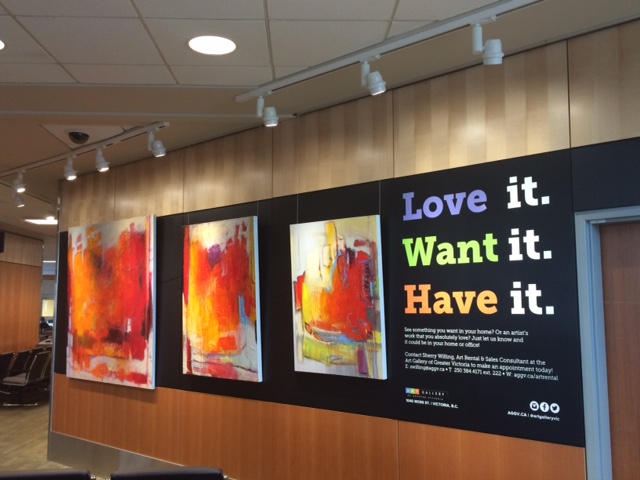
Art Gallery of Greater Victoria
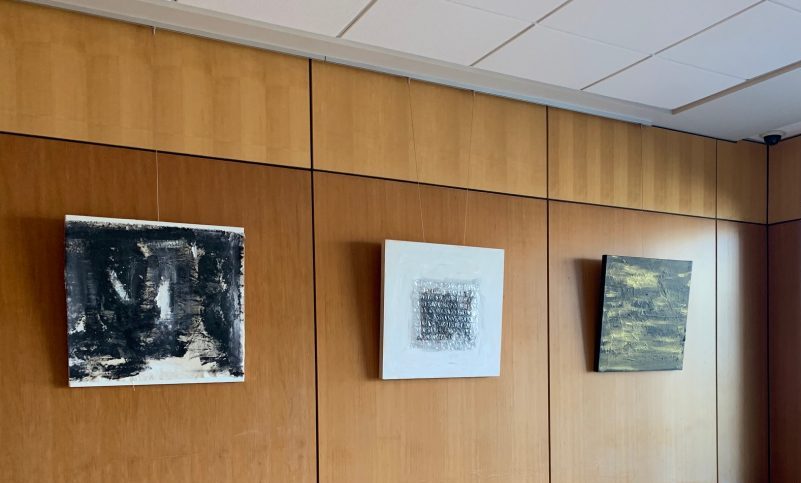
Victoria Arts Council
AGGV
Currently featuring Charles MacGregor to July 14.
About the Artist:
Since the age of 14, Charles MacGregor had wished to be an artist. He enjoyed his art classes at school in Victoria, and found that he had a talent for design.
MacGregor’s first collage dates from 2016. He was walking along Fisgard Street and saw a jean jacket hanging over a hydrant. He became infatuated as to how the jacket, with newspapers and paint, would look on canvas. The result is ‘Street’.
‘Canadian Flag’ (2018) developed from MacGregor’s characteristic working method of molding, stripping back and building up. He also, at one stage, removed the flag, cut it up, and reintroduced it as fragments. ‘This collage’, he says ‘is not a protest nor a nationalistic gesture’. It does evoke Canada but is perhaps more a formal statement on how red and white might interact with one another and relate to the accompanying shapes’. The work well represents his agenda with found everyday objects (newspapers, a measuring tape, a garment, etc.): to let them be used for new artistic expression, but also to recall their past and to invite a response from the viewer.
MacGregor is producing collages on a consistent basis, more particularly 3-D, i.e., relief or what Kurt Schwitters coined as ‘assemblage’. To each of MacGregor’s works there is coherence of design with usually one element standing out among others and accentuating the visual experience.
His materials variously include newspapers, jeans, leather garments, saw blades, measures, and so on. The shapes, which he achieves with the garment material, reflect its malleability.
These collages are in the tradition of such masters of the genre as Jean Arp and Kurt Schwitters.
With an estimated 2 million people passing through the Victoria International Airport each year, the Victoria Airport Authority (VAA) Board of Directors (Board), has made a commitment to provide a unique opportunity to showcase the work of talented artists in the terminal building.
In 2001 the Board approved the following two tier concept for public art in the new terminal:
- Tier one – the acquisition of major art works chosen through a fair competitive process.
- Tier two – the display on a rotating basis of art from groups and organizations in the region.
To date, the Victoria International Airport’s commissioned collection features artwork on display from local artists and First Nations. A program for rotating art in the terminal building has also been developed and two feature art walls have been built into the design of the terminal building to feature local art from local galleries or arts councils.
Our Values
The adoption of the Board policy reflects the belief that:
- Works of art in public places provide opportunities for citizens to enjoy the arts in everyday life;
- works of art promote Victoria as a center of artistic and cultural excellence;
- artistic and cultural initiatives enhance the quality of life and have the potential to stimulate economic development; and
- art should promote a sense of community pride and identity.
How We Acquisition Work
Victoria Airport Authority may acquire works of art in the following ways:
- By purchase, which includes direct purchase of finished works of art, and commission of works of art (by open or limited competition process).
- By donation, which includes donations from organizations, corporations, and visiting dignitaries.
- By partnering with other public or private organizations.
- By loan from public or private organizations for a defined period of time.
- By rental from an organization for a defined period of time.
Art at the Airport Advisory Committee
The Art at the Airport Advisory Committee is a volunteer body. The Committee is responsible for making recommendations to the Board regarding acquisition of works of art for Victoria Airport Authority.
